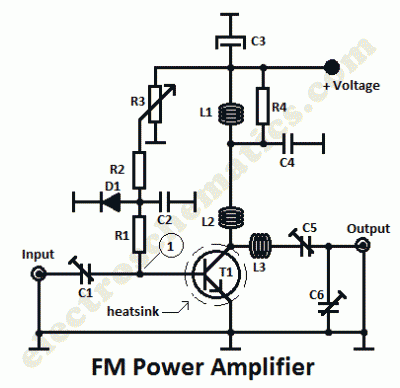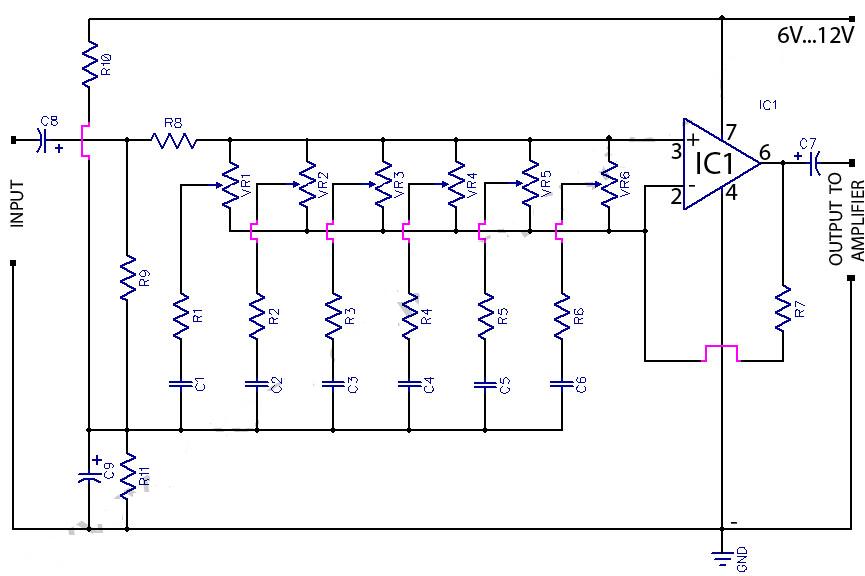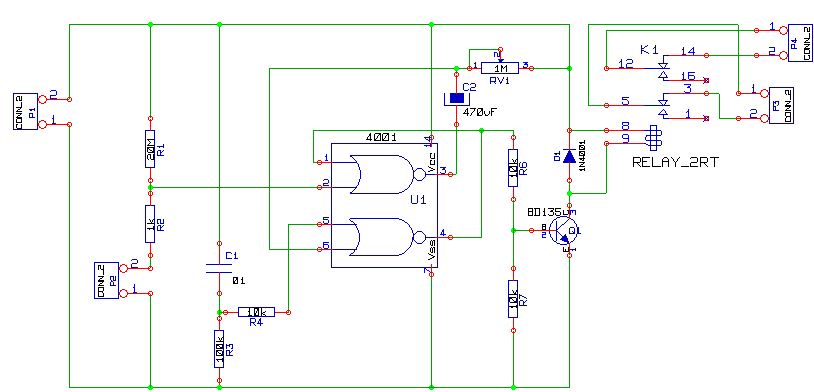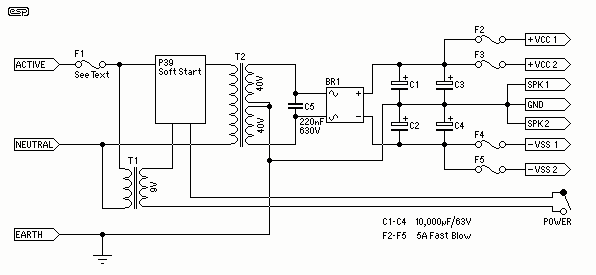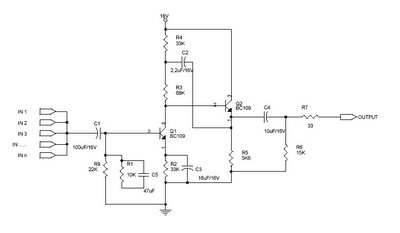
class audio amplifiers

A Class-A audio amplifier is known for its high power consumption; however, its simplicity is appealing when ample power is available. This circuit features a Darlington transistor designed for use with a 5-volt power supply. It is important to note that this circuit, along with others, is not recommended for beginners due to its limited usefulness and the need for a solid understanding of the underlying principles and potential applications. The circuit passes DC through the speaker, which is inefficient and may lead to complications for inexperienced builders. If constructed as specified, the circuit should perform as described, but careful attention to the documentation is necessary. A regulated power supply should provide the 5 volts. The efficiency of this amplifier is below 25%, and significant DC current flows through the speaker; therefore, this additional power must be considered in the speaker's power rating. The circuit is notably simple, with a voltage gain of approximately 20 and an input impedance of around 12k ohms. The schematic includes two bias resistor values corresponding to different speaker impedances. Using a 150k bias resistor with an 8-ohm speaker results in a current draw of about 210mA (1 watt) and an output of approximately 250mW to the speaker, which is sufficient for most small projects. The speaker should have a power rating of 500mW or more and a DC resistance close to 8 ohms (ideally around 7 ohms). It is advisable to check the speaker's resistance with an ohmmeter; a resistance significantly below 7 ohms may lead to excessive current draw. With a 220k resistor and a 16-ohm speaker, the circuit draws about 100mA (500mW) and delivers around 125mW to the speaker. The 16-ohm speaker should be rated at 200mW or more and have a DC resistance near 16 ohms. Most small speakers typically exhibit a DC resistance close to the rated impedance, which is crucial for setting the quiescent current level in this circuit. Alternative NPN Darlington transistors can be used, but it is essential to select one capable of dissipating at least 1 watt. While most power transistors do not require a heatsink, smaller TO-92 packages may experience overheating issues.
The Class-A audio amplifier circuit operates by utilizing a Darlington transistor configuration, which provides high current gain and allows for efficient control of the output signal. The circuit's simplicity lies in its minimal component count and straightforward design, making it suitable for basic audio amplification tasks. The input signal is fed into the base of the Darlington pair, which amplifies the signal before driving the load, in this case, a speaker.
The choice of bias resistors is critical for optimizing performance based on the speaker impedance. The 150k and 220k resistors create different biasing conditions that affect the quiescent current and overall output power. It is essential to match the speaker's impedance to the selected bias resistor to ensure that the amplifier operates within its specified parameters and to prevent damage to the components due to excessive current.
The circuit's efficiency, being below 25%, is a characteristic of Class-A amplifiers, which continuously conduct current even when there is no input signal. This feature results in significant power loss as heat, making the design less suitable for battery-operated devices. However, when powered by a stable 5V supply, the amplifier can deliver adequate output for small audio applications, such as driving headphones or small speakers.
When selecting a speaker, it is crucial to consider both the power rating and the DC resistance. A speaker rated for higher power will ensure reliable operation without distortion or damage, while the DC resistance must align with the amplifier's design to prevent excessive current draw. Additionally, the use of appropriate transistors that can handle the required power dissipation is essential for the longevity and reliability of the amplifier.
In summary, this Class-A audio amplifier circuit represents a straightforward approach to audio amplification, suitable for small projects. Its design emphasizes the importance of component selection, biasing, and understanding the implications of DC current flow through the speaker, ensuring that users can effectively implement the circuit while achieving satisfactory performance.A class-A audio amplifier is pretty wasteful of power but when plenty of power is available the simplicity is attractive. Here is a simple darlington transistor example intended for use with a 5 volt power supply. This circuit and the following aren`t for beginners; they are of limited usefulness and require an understanding of the underlying prin
ciples and potential applications. They all pass DC through the speaker which is wasteful and can cause problems for the inexperienced builder. If built without variation, they should perform as described but make sure to read the text. The 5 volts should be provided by a regulated power supply. The efficiency is below 25% and significant DC current flows in the speaker and that additional power should be figured in to the power rating of the speaker.
But look how simple it is! The voltage gain is only about 20 and the input impedance is about 12k. The schematic shows two values of bias resistor to be used with the corresponding speaker impedance. With the 150k bias resistor and 8 ohm speaker, the circuit draws about 210mA (1 watt) and can deliver about 250 mW to the speaker which is plenty of volume for most small projects. The speaker should be rated at 500 mW or more and should exhibit a DC resistance near 8 ohms (perhaps 7 ohms).
Check the candidate speaker with an ohmmeter; much below 7 ohms will cause excessive current draw. With the 220k resistor and 16 ohm speaker, the circuit draws about 100 mA (500 mW) and delivers about 125 mW to the speaker. The 16 ohms speaker should be rated at 200 mW or more and exhibit nearly 16 ohms of DC resistance. (Most small speakers have a DC resistance near the rated impedance and that resistance is used to set the quiescent current level in this circuit.
) Other NPN darlington transistors will work but choose one that can dissipate 1 watt minimum. Most power types don`t need a heatsink but tiny TO92`s might overheat. 🔗 External reference
The Class-A audio amplifier circuit operates by utilizing a Darlington transistor configuration, which provides high current gain and allows for efficient control of the output signal. The circuit's simplicity lies in its minimal component count and straightforward design, making it suitable for basic audio amplification tasks. The input signal is fed into the base of the Darlington pair, which amplifies the signal before driving the load, in this case, a speaker.
The choice of bias resistors is critical for optimizing performance based on the speaker impedance. The 150k and 220k resistors create different biasing conditions that affect the quiescent current and overall output power. It is essential to match the speaker's impedance to the selected bias resistor to ensure that the amplifier operates within its specified parameters and to prevent damage to the components due to excessive current.
The circuit's efficiency, being below 25%, is a characteristic of Class-A amplifiers, which continuously conduct current even when there is no input signal. This feature results in significant power loss as heat, making the design less suitable for battery-operated devices. However, when powered by a stable 5V supply, the amplifier can deliver adequate output for small audio applications, such as driving headphones or small speakers.
When selecting a speaker, it is crucial to consider both the power rating and the DC resistance. A speaker rated for higher power will ensure reliable operation without distortion or damage, while the DC resistance must align with the amplifier's design to prevent excessive current draw. Additionally, the use of appropriate transistors that can handle the required power dissipation is essential for the longevity and reliability of the amplifier.
In summary, this Class-A audio amplifier circuit represents a straightforward approach to audio amplification, suitable for small projects. Its design emphasizes the importance of component selection, biasing, and understanding the implications of DC current flow through the speaker, ensuring that users can effectively implement the circuit while achieving satisfactory performance.A class-A audio amplifier is pretty wasteful of power but when plenty of power is available the simplicity is attractive. Here is a simple darlington transistor example intended for use with a 5 volt power supply. This circuit and the following aren`t for beginners; they are of limited usefulness and require an understanding of the underlying prin
ciples and potential applications. They all pass DC through the speaker which is wasteful and can cause problems for the inexperienced builder. If built without variation, they should perform as described but make sure to read the text. The 5 volts should be provided by a regulated power supply. The efficiency is below 25% and significant DC current flows in the speaker and that additional power should be figured in to the power rating of the speaker.
But look how simple it is! The voltage gain is only about 20 and the input impedance is about 12k. The schematic shows two values of bias resistor to be used with the corresponding speaker impedance. With the 150k bias resistor and 8 ohm speaker, the circuit draws about 210mA (1 watt) and can deliver about 250 mW to the speaker which is plenty of volume for most small projects. The speaker should be rated at 500 mW or more and should exhibit a DC resistance near 8 ohms (perhaps 7 ohms).
Check the candidate speaker with an ohmmeter; much below 7 ohms will cause excessive current draw. With the 220k resistor and 16 ohm speaker, the circuit draws about 100 mA (500 mW) and delivers about 125 mW to the speaker. The 16 ohms speaker should be rated at 200 mW or more and exhibit nearly 16 ohms of DC resistance. (Most small speakers have a DC resistance near the rated impedance and that resistance is used to set the quiescent current level in this circuit.
) Other NPN darlington transistors will work but choose one that can dissipate 1 watt minimum. Most power types don`t need a heatsink but tiny TO92`s might overheat. 🔗 External reference
